
Science Phenomena: 2nd grade - Biodiversity and Ecosystems
- Subject:
- Professional Learning
- Science
- Material Type:
- Lesson
- Provider:
- The Wonder of Science
- Date Added:
- 10/08/2021

This collection contains highly recommended second-grade SEEd lessons, activities, and other resources from the eMedia library.

Science Phenomena: 2nd grade - Biodiversity and Ecosystems
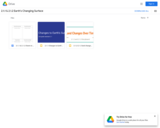
Google folder with Googles Slides and accompanying studnent journal files

This is a second-grade student science experience tied to SEEd standard 2.1.1. In this experience students use models to obtain information about the patterns in shapes of canyons.
These experiences were designed to support students in engaging in science investigations with siblings and/or parents at home and then report back about what was discovered. They were created in a way that is easily adaptable for both online and printed formats. They are formatted to help students wonder about and investigate the science phenomena happening in the world around them. These experiences do not describe how students should write up and return work to their teacher. It is up to each teacher to adapt them to best meet student needs. When individualized by the teacher, a student could be asked to engage in one or more of these experiences a week and report back. This format aligns closely to the vision and expectation of the SEEd standards.

This is a second-grade student science experience tied to SEEd standard 2.1.2. In this experience students construct explanations about what changes to EarthÕs surface occur quickly or slowly.
These experiences were designed to support students in engaging in science investigations with siblings and/or parents at home and then report back about what was discovered. They were created in a way that is easily adaptable for both online and printed formats. They are formatted to help students wonder about and investigate the science phenomena happening in the world around them. These experiences do not describe how students should write up and return work to their teacher. It is up to each teacher to adapt them to best meet student needs. When individualized by the teacher, a student could be asked to engage in one or more of these experiences a week and report back. This format aligns closely to the vision and expectation of the SEEd standards.

This is a second-grade student science experience tied to SEEd standard 2.2.2. In this experience students investigate how the structure of the body parts of fish help them to function and survive.
These experiences were designed to support students in engaging in science investigations with siblings and/or parents at home and then report back about what was discovered. They were created in a way that is easily adaptable for both online and printed formats. They are formatted to help students wonder about and investigate the science phenomena happening in the world around them. These experiences do not describe how students should write up and return work to their teacher. It is up to each teacher to adapt them to best meet student needs. When individualized by the teacher, a student could be asked to engage in one or more of these experiences a week and report back. This format aligns closely to the vision and expectation of the SEEd standards.
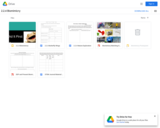
Google folder with Googles Slides and accompanying studnent journal files

This is a second-grade student science experience tied to SEEd standard 2.3.3. In this experience students explore how objects with different functions can be made of the same pieces.
These experiences were designed to support students in engaging in science investigations with siblings and/or parents at home and then report back about what was discovered. They were created in a way that is easily adaptable for both online and printed formats. They are formatted to help students wonder about and investigate the science phenomena happening in the world around them. These experiences do not describe how students should write up and return work to their teacher. It is up to each teacher to adapt them to best meet student needs. When individualized by the teacher, a student could be asked to engage in one or more of these experiences a week and report back. This format aligns closely to the vision and expectation of the SEEd standards.
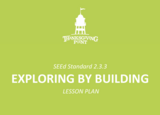
Develop and use a model to describe how an object, made of a small set of pieces, can be disassembled and reshaped into a new object with a different function. Emphasize that a great variety of objects can be built from a small set of pieces. Examples of pieces could include wooden blocks or building bricks.
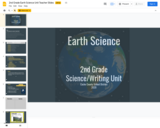
Integrated science and literacy lesson plans for Grades 1-2 developed by Cache County School District.

In this video an educator from the Hogle Zoo helps us understand more about beavers, the structure and function of their habitat, and more.
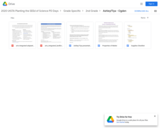
Lesson plans or supporting resources that aid teacher instruction.
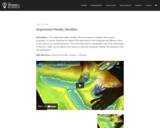
Science Phenomena: 2nd grade - A Changing Earth

In this instructional video, the Hogle Zoo explains how to use the lesson plan "Beaver Puppet 2.2.2."

By participating in this activity, students will:
• understand the concept of structure and function and how it applies to a beaver's ability to create and live in a wetland habitat.
• make comparisons between their adaptations and the structure and function of a beaver's body for survival in its wetland habitat.
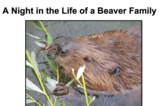
This powerpoint accompanies the lesson plan "A Night in the Life of a Beaver."

This powerpoint accompanies the lesson plan "A Night in the Life of a Beaver."

In this instructional video, the Hogle Zoo explains how to use the lesson plan "Beaver Tools of the Trade 2.2.2."

By participating in this activity, students will:
• understand the concept of structure and function and how it applies to a beaver's ability to create and live in a wetland habitat.
• make comparisons between unrelated objects through metaphorse to learn the structure and function of a beaver's body for survival in its wetland habitat.
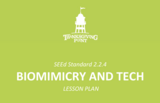
Design a solution to a human problem by mimicking the structure and function of plants and/or animals and how they use their external parts to help them survive, grow, and meet their needs. Define the problem by asking questions and gathering information, convey designs through sketches, drawings, or physical models, and compare and test designs. Examples could include a human wearing a jacket to mimic the fur of an animal or a webbed foot to design a better swimming fin.

A Powerpoint lesson where students study bouncy balls. (April Mitchell)